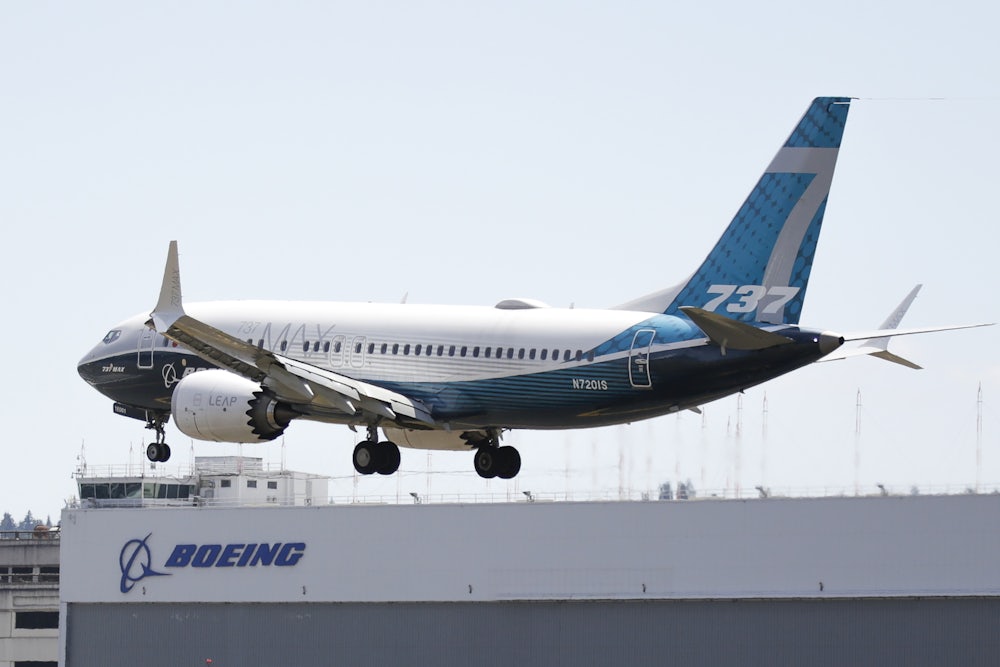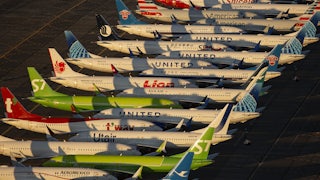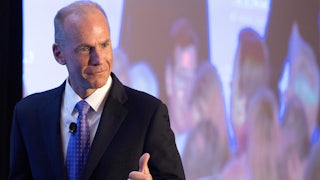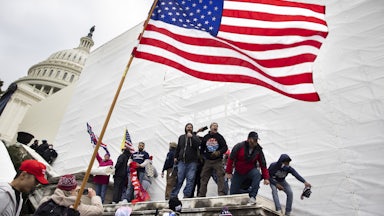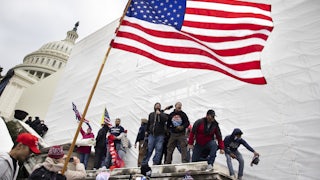In
September 2021, The Wall Street Journal ran a short but disturbing story
about an incident at a Boeing facility in San Antonio, where the company is
developing new jets to serve as Air Force One—a vehicle the company has
described as “effectively an airborne seat of government” that is of the
“highest national priority.” According to the Journal, the company found
two empty “miniature bottles of tequila” on one of the planes. Both Boeing and the
government said what you would expect—that they were taking the issue seriously—but
given the parties involved and recent history, this was not particularly reassuring.
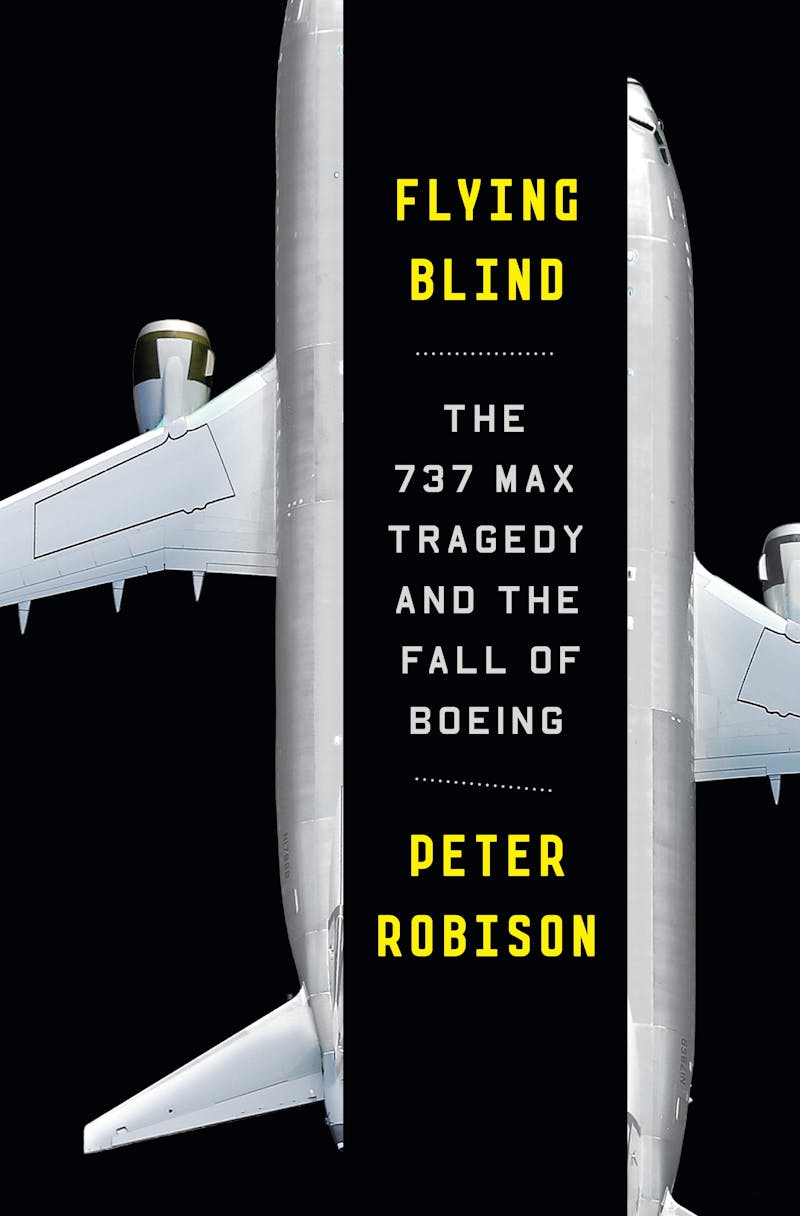
In early 2019, the company was facing intense public and political pressure following two crashes of its 737 MAX planes. The first was on October 29, 2018, when Lion Air Flight 810 crashed into the sea after taking off in Indonesia, and the second took place just four months later, on March 10, 2019, when Ethiopian Airlines Flight 302 crashed shortly after departing from Addis Ababa. Everyone on the flights—346 people in total—died. It is hard to overstate just how unusual this was at the time: In 2017, the commercial airline industry had had its safest year on record. That year there were no deaths resulting from accidents in commercial passenger jets—an achievement that was the culmination of a decades-long trend of decreasing accidents even as air travel became more accessible than ever. The 737 MAX crashes were tragedies that also, justifiably, became a full-blown international media spectacle as people searched for answers.
But attention to the Boeing crashes proved much less enduring than it might have been. The Covid-19 pandemic, breaking out within a year of the second crash, pushed Boeing news off the front pages. It also meant the number of people taking commercial flights drastically dipped. Official government accounts formed over 2019 and 2020: Reports from Indonesian and Ethiopian authorities appeared in October 2019 and March 2020, while in the United States, there were reports from committees of the House of Representatives and the Senate in September and December 2020, as well as a criminal settlement between Boeing and the Justice Department that was released on January 7, 2021—in the final weeks of the Trump administration and the day after the siege of the U.S. Capitol. The highly technical nature of many of the relevant issues made the particulars difficult to follow for even the most dedicated news consumer. And further confusing matters was that several in-depth accounts of the crash—notably, a lengthy article in The New York Times Magazine, published in 2019, that laid much of the blame on the pilots, rather than on any “intentional sacrifice of safety for gain” on the part of Boeing—appeared before key facts had been established, and before more investigations were completed.
Why did the 737s crash, and what are Boeing and authorities doing to stop it happening again? In his book Flying Blind: The 737 MAX Tragedy and the Fall of Boeing, Peter Robison, a reporter for Bloomberg, avoids simple explanations or scapegoats. His story focuses on two major shifts: one is the evolution of Boeing over the course of the last half-century, as the company’s management focused less on technical innovation and safety than on increasing profits and pleasing shareholders; the second is a political and business climate that became increasingly hostile to assertive federal regulation. Robison convincingly depicts the story of the 737 MAX as the culmination of these trends, but he ultimately resists the sort of pat causal explanations that many—including the government itself—have used to try to describe what happened. It is a story with many responsible parties—with varying motivations and levels of culpability—and little in the way of easy answers.
At this point, some disclosures may be in order: Before I left the Justice Department last year, I was a prosecutor in the unit that conducted the investigation following the crashes, and I know several people on the team, though I was not involved in the investigation. I also spoke with Robison as he was finishing his book—after I had written pieces criticizing the DOJ’s settlement—and he reached out to me after I had committed to reviewing it to ask me about a story that he was working on, but he did not know that I was writing this piece until I told him.
Robison’s narrative searches for the origins of the Boeing Company as we know it. Though founded in 1916 in Seattle, it was after World War II that the company started down the path that would eventually lead it to “dominate the jet age.” Over the next few decades, the company was run by a relatively fastidious lot, with a culture that favored innovation and prided itself on its deference to its engineers, particularly on matters of safety. By the 1980s, however, Boeing’s leadership began to focus more intently on boosting the company’s profitability and on pleasing its shareholders—the sort of Wall Street–friendly managerial style that coincided with the conservative reordering of the American political and economic landscapes at the time.
The following decades saw a clear trend: Boeing came to rely on a “standard corporate playbook: anti-union, regulation-light, outsourcing-heavy,” Robison writes, even as the company remained “pro-handout, at least when it comes to tax breaks and lucrative government contracts.” In 2000, for instance, a relatively modest dispute over pay for engineers and technical employees resulted in the largest white-collar strike in history when 23,000 employees walked out. Several years later, the company managed to secure hundreds of millions of dollars in tax breaks from Washington state premised on anticipated job creation that never materialized.
Exactly how and why the Boeing 737 became so prevalent in the airline industry in the first place turns out to be a tale of economic happenstance. After the passage of the Airline Deregulation Act in 1978, the government no longer set minimum airfares and no longer imposed route restrictions on carriers. The result was a years-long period of industry upheaval—new airlines were created, then shuttered or acquired by others—overseen by federal regulators who exercised little in the way of antitrust scrutiny. Over time, “the now-familiar Big Three—American, United, and Delta”—consolidated their control of the airline industry “with a strategy few anticipated at the time, funneling traffic from smaller cities into big hubs like Chicago and Atlanta, and from there directing fliers on to their final destinations.” This hub-and-spoke strategy allowed the airlines to allocate passengers more efficiently across flight segments—by allowing them to use smaller planes for shorter routes with less demand—but it was a strategy that “would require many more small jets making frequent flights.” The modestly sized Boeing 737, which had been created in 1967, fit the bill.
Still, the 737 mostly remained “an afterthought” to Boeing executives until 1984, when Airbus developed the A320 to compete directly in this “valuable new market segment.” Over time, the 737 became vital to Boeing’s economic standing, and the company worked hard to keep costs down as it rolled out subsequent, modestly improved iterations.
Over the same period, the industry regulator, the Federal Aviation Administration, gradually changed its stance toward the companies it regulated. Founded in 1958, the FAA had a dual mandate, both to ensure safety in aviation and to encourage the growth of the industry. These two objectives always created an inherent internal tension, but the agency became more beholden to the industry beginning in the 1990s. Republicans in Congress were pushing to reduce the size of the federal government, while Democrats in President Bill Clinton’s administration claimed that they could make federal agencies more efficient through cost-cutting and management practices imported from the business world. At the FAA, this meant that the agency would use performance-based measures to determine employees’ pay, while budget cuts led to a long-term reduction in the agency’s workforce over the period from 1996 to 2012. Business jargon also entered the agency’s lexicon, with the head of the FAA under George W. Bush at one point promising to “run the FAA more like a business” by using “a dynamic, results-oriented plan that we’re going to pulse regularly, measure quarterly, and adapt as necessary real-time.” Traditionally, the FAA had installed deputies with plane manufacturers in order to perform much of the agency’s safety oversight work, but after the completion of an internal initiative that began in 2005, the companies themselves—including Boeing—were allowed to select their own FAA representatives, who would then report to a manager at Boeing while the FAA retained “organizational” supervision. That delegation’s task included items as minute but critical as how to minimize the potential hazards of an in-flight fire resulting from a battery overheating.
In Robison’s telling, these two trends—Boeing’s preoccupation with cost-cutting and placating shareholders, and the degradation of the FAA’s oversight abilities—fatally intersected as the 737 MAX (the thirteenth iteration of the 737 design since its inception) was developed, beginning in 2011, and eventually rolled out with the FAA’s approval in early 2017.
Over time, there have been many facile explanations for the crashes—they were the pilots’ fault, they happened because Boeing hid the existence of a system that it developed for the MAX (again, to keep costs down) called the Maneuvering Characteristics Augmentation System, and so on—but Robison describes a “chain of errors” of the sort that are “often said to accumulate in aviation accidents, the heartbreaking clarity coming only in hindsight.”
Robison writes that “the sloppiness had started at Boeing” with “early compromises of the plane’s design.” One of these was the fateful decision to leave the plane’s cockpit unchanged in order to obviate the need for costly flight simulator training for pilots flying the new aircraft—a compromise that meant that the 737 MAX was “the last big commercial jet” that required pilots to use “heavy binders laden with step-by-step instructions to guide them in the event of an emergency” rather than an electronic checklist, an ordeal that would hamper the pilots in the crucial final minutes of the doomed flights.
But the truth, as Robison describes it, is that from a technical standpoint, there is no single, simple answer. The crashes were the result of accumulating errors and decisions made largely by Boeing executives and employees. The imperative to avoid any significant modification to the cockpit was the result of a provision in Boeing’s deal with Southwest Airlines—which would go on to order nearly 250 of the planes by 2019—that would have required the manufacturer to pay the airline $1 million per airplane if the FAA required flight simulator training. Another cost-saving device was the absence of a system that would have alerted pilots to a discrepancy between sensors that, in the case of the Lion Air crash, were not working properly and that appear to have precipitated the flight’s fall.
The fact that the existence of the MCAS system was not prominently identified by Boeing—and certainly not widely known among pilots—also seems to have been important, but it does not explain as much as the company’s more single-minded detractors have claimed. For one thing, the Lion Air plane that crashed had in fact encountered similar problems on the immediately preceding flight—a faulty sensor that triggered the MCAS system—but an experienced pilot who happened to be sitting in on the flight was able to avoid the catastrophe that would befall the next flight. Moreover, after the first crash—and before the crash of the Ethiopian Airlines flight—the existence of the MCAS system became widely known, and Boeing issued a bulletin with instructions for pilots that, in theory at least, contained enough information to prevent another tragedy.
Boeing’s
public handling of the crashes entailed an entirely different set of decisions,
with more clearly delineated villains and disgraceful motivations. After the
first crash, Boeing blamed the pilots—a strategy that worked for a time. The
company’s lawyers also worked hard to get grieving family members to sign
sweeping releases for relatively small monetary payments.
When the company faced investigators in Congress and at DOJ, Boeing’s lawyers used a very common defense strategy in large white-collar investigations, which is to sift through the voluminous documents being produced to investigators and to affirmatively identify material that the company believes that the government (which does not have the same resources as the company to review everything in detail) would want to know about. This is now a fairly standard part of “cooperation” with federal investigations, but as part of this process, companies can shift investigators’ focus in subtle but pivotal ways.
This appears to be one reason that, according to Robison, the company specifically flagged for investigators a collection of internal communications involving Mark Forkner, who was Boeing’s chief technical pilot for the 737 MAX and who had been tasked with ensuring that the FAA approved the 737 MAX without requiring flight simulator training for pilots. The most notorious of these is an exchange from November 2016 in which Forkner at one point told a colleague that he had “lied to the regulators (unknowingly)” about how MCAS worked. The issue concerned the speed at which MCAS would be triggered and Forkner’s belated understanding on this point after he had initially spoken with FAA representatives about it. Generally speaking, anytime someone in a white-collar criminal investigation says in writing that they “lied” to someone, it is going to get the attention of prosecutors—even if, as in this case, the person in question casts his own characterization into doubt by saying that he did it “unknowingly.”
The company’s efforts at managing the fallout appear to have been largely successful—in part due to the attention that has focused on Forkner and in part due to luck. The Senate Transportation Committee issued a lengthy report last fall that largely aligns with Robison’s account of the failures at Boeing and the FAA, but it did not generate the public outrage that it should have. This may have had a lot to do with the fact that the report came out in September 2020—in the midst of the fiasco that was the Trump administration’s federal management of the pandemic and in the final, heated months of the presidential campaign.
In January, in the waning days of the Trump administration, the DOJ and Boeing reached a settlement that resolved the department’s criminal investigation concerning the 737 MAX through a so-called “deferred prosecution agreement”—a deal in which the government files a criminal charge against the company but agrees to hold it in abeyance in exchange for the payment of a financial penalty. The charge in this case was a conspiracy to defraud the U.S., premised on Forkner’s allegedly “incomplete and inaccurate” representations to the FAA about how MCAS worked. The term of the deal is three years, which means that if Boeing does not do something seriously wrong during that period, the government will dismiss the charge. In October, the DOJ criminally charged Forkner himself in an indictment alleging the same misconduct.
At the time that it was announced, the DOJ’s deal with Boeing was widely reported as a $2.5 billion settlement, but the top-line figure was highly misleading. In fact, as Robison notes, most of it was money that Boeing committed to paying third parties that it was likely to pay anyway. Less than a tenth of it was an actual fine, and even that just represented what the government itself called “Boeing’s cost-savings” from the misconduct—in particular, $243.6 million that represented what Boeing would have had to spend in order to implement “full-flight simulator training for the 737 MAX.” The deal came with what appears to have been an unprecedented gift to the company in the form of a statement from the DOJ that said that “the misconduct was neither pervasive across the organization, nor undertaken by a large number of employees, nor facilitated by senior mismanagement.”
The settlement was widely panned, including by other legal observers. A well-regarded expert on corporate law at Columbia Law School called it “an egregious case and one of the worst deferred prosecution agreements I have seen.” He posited that “by the end of the Trump administration, there was no interest in conducting a full, thorough investigation.”
According to Robison, the assessment among the rank and file within Boeing was not much different. He reports that some of them found it “bizarre that the managers—men who heaped on the pressure, reaped the rewards, and then disappeared when the whole deadly blunder was exposed—never paid any price.” One Boeing pilot took issue with the clunky headline of the DOJ’s press release announcing the deal. He offered an alternative—one that would, instead, tell the world “that Boeing got away with murder.”
It is impossible to say how things would have unfolded for Boeing in the absence of the pandemic as well as the economic and political turmoil of recent years—all of which made it both easy and understandable for the public to avoid following the messy and complicated details as they have developed. Both Boeing and the government still would have been highly incentivized to find someone to legally pin most of the blame on, and Forkner still would have been an appealing target for everyone involved.
Meanwhile, travelers across the world are now preparing to take to the air once again, but the safety of the aircraft themselves seems to be less of a concern these days than a surging new variant, unruly passengers, and the return of pilots after months out of cockpits. Even this makes some sense given that flying remains very safe, but as Robison shows, the story of the 737 MAX crashes—while having deadly and irreversible effects for 346 people and their families—is just as much about Boeing as it is about broader, decades-long changes in corporate management and about the government’s worsening ability to keep up with the industries it is supposed to be regulating and policing. That story will continue to play out in ways that extend far beyond Boeing, and long after the pandemic comes to a close.
